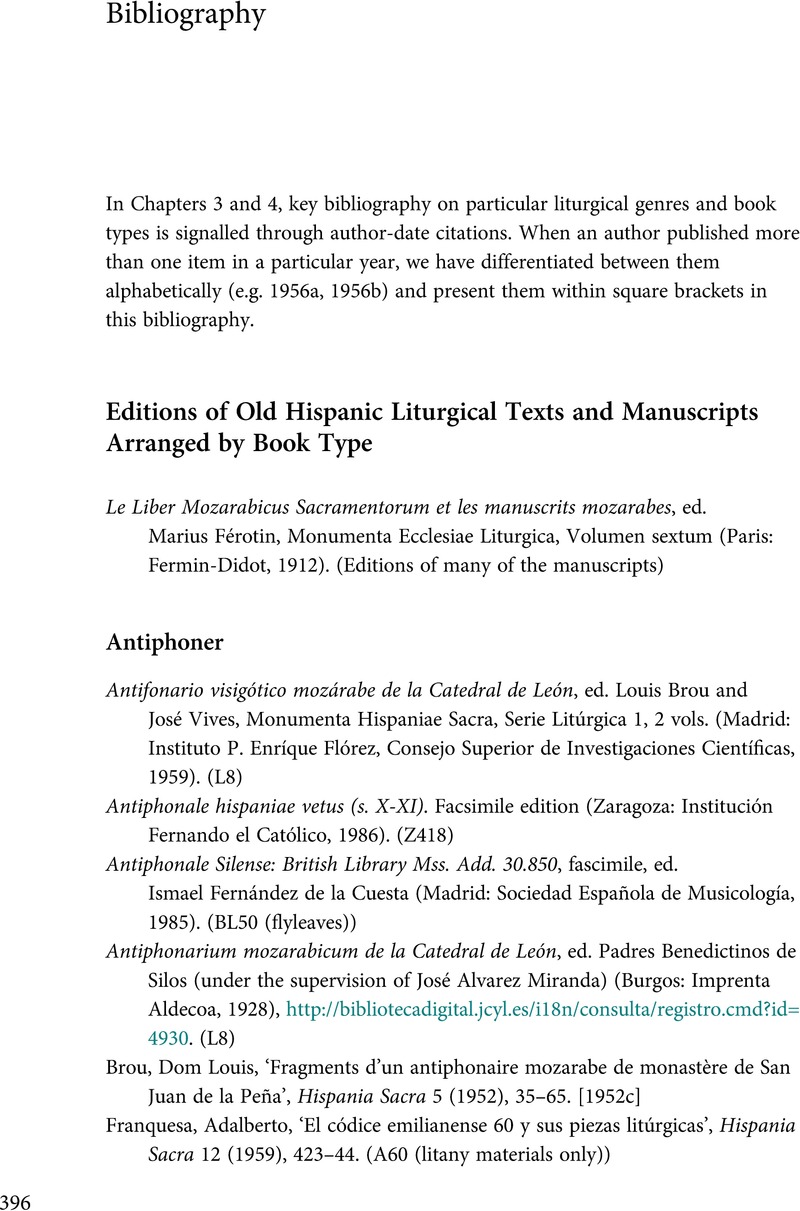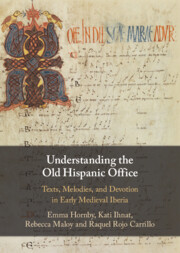Book contents
- Frontmatter
- Contents
- Figures
- Tables
- Preface and Acknowledgements
- Manuscript Sigla
- Notes on the Text
- Abbreviations
- Introduction
- 1 The Old Hispanic Office: Evidence and Silence
- 2 The Liturgical Year in the Old Hispanic Rite
- 3 Old Hispanic Liturgical Manuscripts
- 4 Old Hispanic Genres: Chants, Prayers and Readings
- 5 The Old Hispanic Liturgical Day
- 6 Old Hispanic Musical Notation: Its Characteristics and an Analytical Methodology
- 7 Melodic Language in Old Hispanic Chant: Illustrating an Analytical Methodology
- 8 Text, Melody and Theology in the Old Hispanic Marian Office
- Appendix 1 Sigla, Dating and Provenance of the Old Hispanic Liturgical Manuscripts Containing Notated Chant
- Appendix 2 Texts for the Old Hispanic Marian Office
- Appendix 3 Facsimile Images of Chants for the Old Hispanic Marian Office in L8, ff. 56v–60v (Vespers and Matutinum) and ff. 62r–63r (Second Vespers)
- Bibliography
- Index of Manuscripts
- General Index
- References
Bibliography
Published online by Cambridge University Press: 07 January 2023
- Frontmatter
- Contents
- Figures
- Tables
- Preface and Acknowledgements
- Manuscript Sigla
- Notes on the Text
- Abbreviations
- Introduction
- 1 The Old Hispanic Office: Evidence and Silence
- 2 The Liturgical Year in the Old Hispanic Rite
- 3 Old Hispanic Liturgical Manuscripts
- 4 Old Hispanic Genres: Chants, Prayers and Readings
- 5 The Old Hispanic Liturgical Day
- 6 Old Hispanic Musical Notation: Its Characteristics and an Analytical Methodology
- 7 Melodic Language in Old Hispanic Chant: Illustrating an Analytical Methodology
- 8 Text, Melody and Theology in the Old Hispanic Marian Office
- Appendix 1 Sigla, Dating and Provenance of the Old Hispanic Liturgical Manuscripts Containing Notated Chant
- Appendix 2 Texts for the Old Hispanic Marian Office
- Appendix 3 Facsimile Images of Chants for the Old Hispanic Marian Office in L8, ff. 56v–60v (Vespers and Matutinum) and ff. 62r–63r (Second Vespers)
- Bibliography
- Index of Manuscripts
- General Index
- References
Summary

- Type
- Chapter
- Information
- Understanding the Old Hispanic OfficeTexts, Melodies, and Devotion in Early Medieval Iberia, pp. 396 - 429Publisher: Cambridge University PressPrint publication year: 2022



